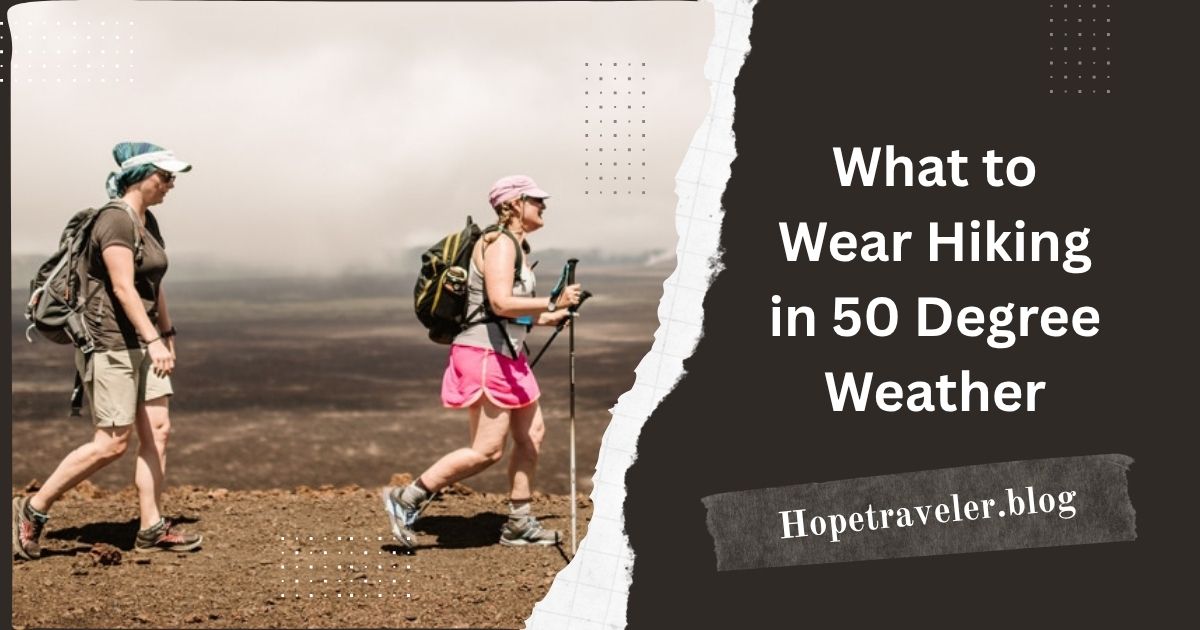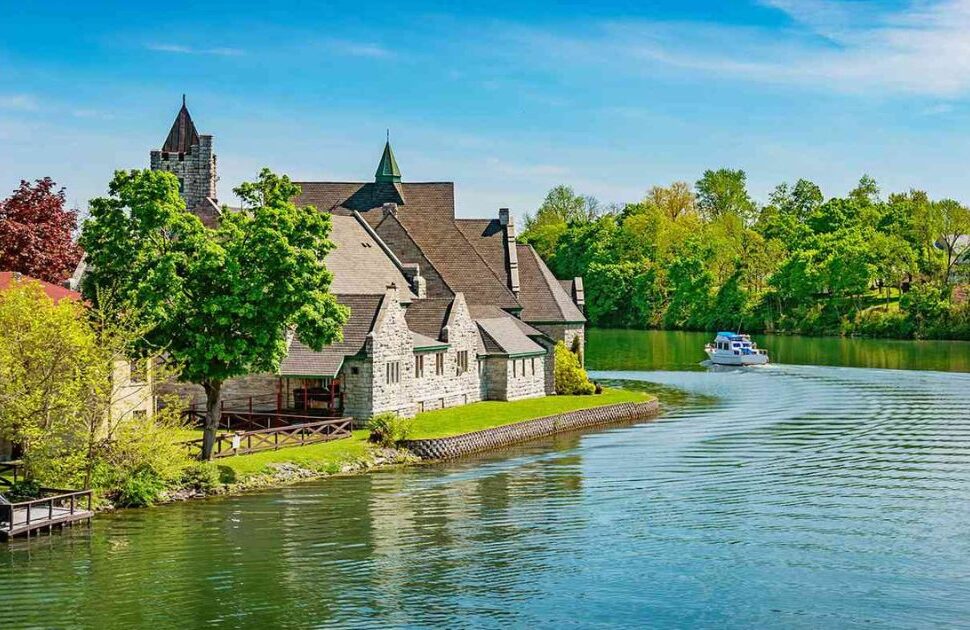When you’re planning a hiking trip in 50-degree Fahrenheit weather (about 10°C), your clothing choices can make or break your adventure. Dressing appropriately ensures not only comfort but also safety, especially as weather in the 50s can be unpredictable—cool in the shade, warm in the sun, and chilly if there’s wind or rain.
In this comprehensive guide, we’ll explore what to wear hiking in 50 degree weather, including essential layering techniques, fabric choices, footwear, and accessories. Whether you’re an experienced hiker or a beginner preparing for your first trail, this article will help you gear up smartly.
Understanding 50-Degree Hiking Weather
Hiking in 50-degree weather offers some unique benefits—it’s not too hot, not too cold, and often great for longer distances. However, it’s considered a transitional temperature. This means the weather can swing one way or the other quickly—sunshine can make it feel like the upper 60s, while wind or rain can make it feel like the 40s.
That’s why layering is your best strategy. Dressing in layers allows you to add or remove clothing based on your activity level and changing temperatures.
The Importance of Layering
The layering system is the gold standard in outdoor gear:
1. Base Layer (Moisture Wicking)
- Purpose: Keeps sweat away from your skin.
- Best Fabrics: Merino wool, synthetic blends like polyester. Avoid cotton, which holds moisture.
- Options: Long-sleeve or short-sleeve base depending on your cold tolerance.
Pro Tip: A light merino wool base layer is ideal—it keeps you warm, even when damp, and it’s breathable.
2. Mid Layer (Insulation)
- Purpose: Traps heat and keeps your body warm.
- Best Fabrics: Fleece, light down, synthetic insulation.
- Options: A quarter-zip fleece or lightweight puffer jacket.
Pro Tip: Fleece is great for breathability and insulation during physical activity like hiking.
3. Outer Layer (Protection)
- Purpose: Shields you from wind, rain, or snow.
- Best Fabrics: Waterproof or water-resistant shell jackets, windbreakers.
- Options: A lightweight rain jacket or softshell with ventilation.
Pro Tip: Make sure the outer layer has pit zips or ventilation flaps to help with sweat management.
Pants for 50-Degree Weather
Convertible or Hiking Pants
- Wear lightweight hiking pants made from synthetic or nylon blends that offer flexibility and quick drying.
- Convertible pants with zip-off legs offer versatility if temperatures rise later in the day.
Avoid:
- Cotton sweatpants or jeans—they retain moisture and can cause discomfort.
- Shorts—50°F is generally too chilly for exposed legs, especially if you’re hiking through wooded or windy areas.
Footwear Essentials
Hiking Boots or Trail Shoes
- Wear waterproof or water-resistant hiking boots with good ankle support.
- If your hike is on well-maintained trails, trail runners with grippy soles are fine.
Socks
- Choose wool or synthetic hiking socks that wick moisture and keep your feet warm.
- Avoid cotton socks, which can lead to blisters when wet.
Pro Tip: Consider packing an extra pair of dry socks in case your feet get wet.
Accessories to Bring Along
Even in 50-degree weather, the right accessories matter a lot:
1. Hat or Beanie
- A lightweight beanie or ear warmer helps retain heat during chilly mornings.
- A cap with a brim can help protect from sun or light rain.
2. Gloves
- Wear light fleece or wool gloves to keep your hands warm, especially at higher altitudes.
3. Buff or Neck Gaiter
- Buffs can cover your neck and be pulled up to cover your face if it’s windy.
4. Sunglasses
- UV exposure can still be high in cooler weather. Sunglasses protect your eyes and improve visibility.
5. Daypack
- Carry a comfortable hiking backpack to store layers you remove as the day warms up, plus water, snacks, and first aid essentials.
Packing Tips for Unpredictable Weather
While you’re dressing for a 50-degree hike, remember that temperature and weather can shift. Here’s what else you should carry:
- Rain cover for your backpack.
- Emergency rain poncho or ultralight tarp.
- Hand warmers if you’re particularly sensitive to cold.
- Headlamp or flashlight if you’re hiking close to dusk.
Fabrics to Choose (and Avoid)
Ideal Fabrics
- Merino Wool: Warm, breathable, and odor-resistant.
- Polyester/Spandex Blends: Good for active base layers.
- Nylon: Durable and quick-drying, great for pants and jackets.
Fabrics to Avoid
- Cotton: Retains moisture and loses insulation when wet.
- Denim: Heavy and non-breathable, not suitable for active movement.
What Women Should Consider Specifically
Women’s hiking wear for 50 degrees should follow the same layering strategy. However, consider:
- Sports bras made from moisture-wicking fabrics.
- High-waisted leggings with thermal lining or softshell options.
- Body temperature regulation can differ—bring an extra mid-layer if you chill easily.
What Men Should Consider Specifically
Men should also use the three-layer system but consider:
- Zip-off hiking pants for leg ventilation.
- Thin insulated vests under an outer shell for core warmth.
- Avoid over-layering, especially if you sweat heavily.
Example Outfit Checklist for 50°F Hike
Here’s a quick reference:
| Layer | Recommended Item |
|---|---|
| Base Layer | Merino wool long-sleeve shirt |
| Mid Layer | Lightweight fleece or puffer vest |
| Outer Layer | Waterproof shell jacket |
| Pants | Nylon hiking pants |
| Footwear | Waterproof hiking boots + wool socks |
| Accessories | Beanie, gloves, sunglasses, neck gaiter |
Hiking Duration & Elevation Matters
- For short hikes (1–2 hours), fewer layers may suffice.
- For long hikes or high elevations, bring extra insulation.
- Wind chill increases with elevation, and some areas may still have snow or frost on the trail even at 50°F.
Final Thoughts
Understanding what to wear hiking in 50 degree weather can transform your hiking experience from a shivering slog to a refreshing, invigorating journey through nature. The key lies in being prepared and adaptable. Use the layering system, avoid cotton, choose smart accessories, and pack for surprise shifts in weather.
The temperature might not sound extreme, but proper gear ensures you stay warm, dry, and comfortable through every step of your hike. Whether you’re trekking up a mountain or exploring a local forest trail, this temperature range is ideal for hiking—just plan and dress smartly.




